
The Business of Fashion
Agenda-setting intelligence, analysis and advice for the global fashion community.

Agenda-setting intelligence, analysis and advice for the global fashion community.
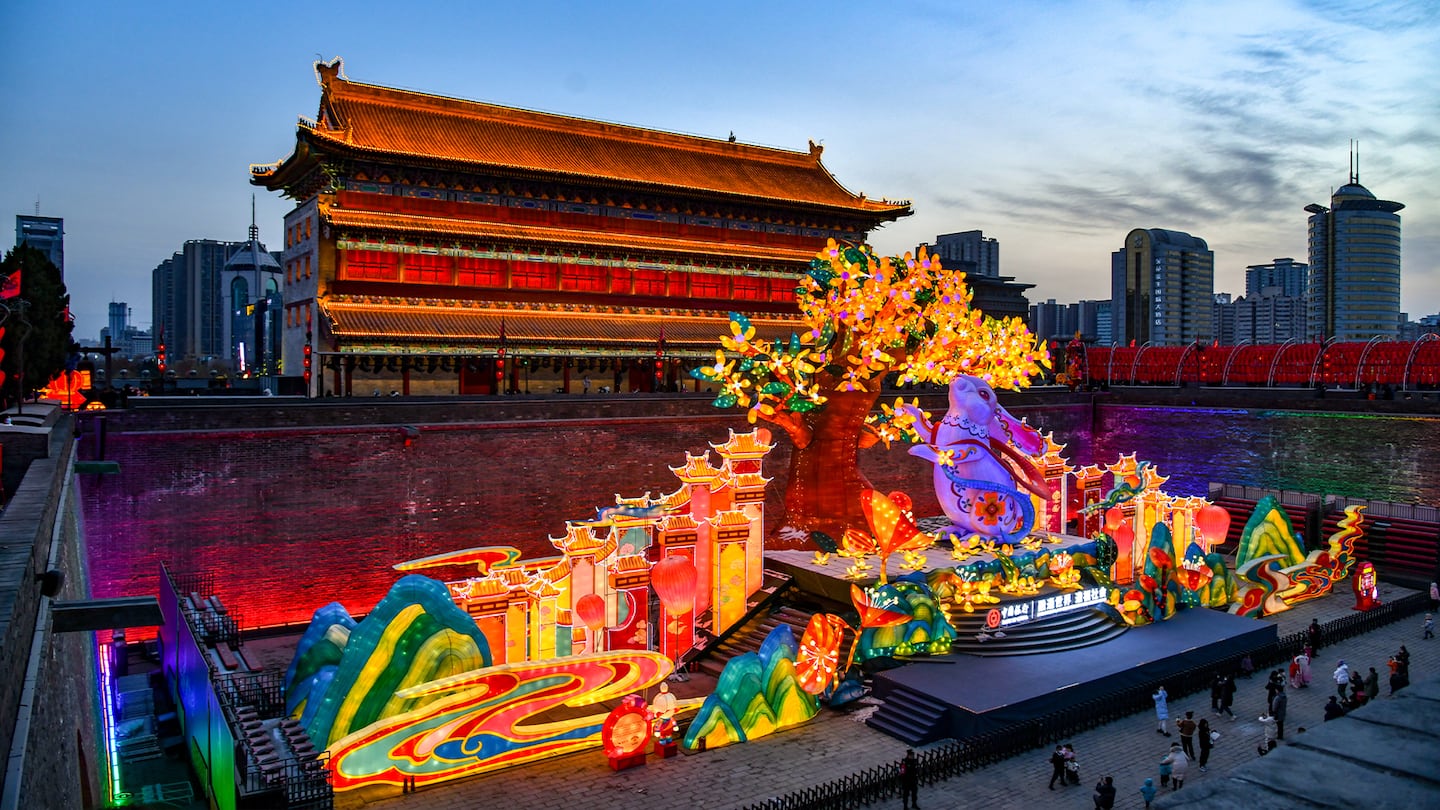
Luxury’s much-needed China recovery is finally on the horizon, as the country moves away from its strict zero-Covid stance.
Last year, in a significant policy shift prompted by widespread protests, the government announced a major roll-back on quarantine restrictions, mass testing and lockdowns in the country. Restrictions on domestic travel were relaxed too, with virus checks for people travelling between regions no longer required and, this month, it was announced that inbound travellers to the country are no longer required to isolate.
Analysts and investors are understandably confident that the shift is a positive sign for the luxury sector in the year ahead, predicting a faster recovery for sales in the all-important market than anticipated six months ago. But brands active in the Chinese luxury market are not out of the woods yet. In the short-term, the outlook remains highly volatile.
The sudden relaxation of restrictions has sent infections of the Omicron variant surging. While the government’s official figures say deaths from Covid-19 are minimal, numerous media reports of hospitals and crematoriums being overwhelmed, as well as the deaths of high-profile public figures, has undermined the government line.
ADVERTISEMENT
The turbulence comes ahead of the Lunar New Year, which begins on January 22, a milestone holiday in China’s annual retail calendar expected to see over two billion people rush to travel and mix with friends and family after being unable to do so for much of last year. The extended 40-day Chunyun period around the holiday and the ensuing Spring Festival, is traditionally a significant sales driver for brands.
“It’s a bumpy ride to the start of the year, but we are much more positive about 2023 now than we were a few months ago,” said Hong Kong-based Imke Wouters, partner at consulting firm Oliver Wyman.
In the long-term, the outlook for China’s luxury market remains strong as Chinese consumers — who remain fundamental to the industry’s global growth — continue to increase spend domestically. Bain forecasts that by 2030, sales in the mainland will drive between 25 to 27 percent of the personal luxury goods market, compared with 11 percent pre-pandemic. Globally, as much as 40 percent of personal luxury goods sales will be made by Chinese.
In the year ahead, however, luxury industry leaders will have to navigate sluggish economic growth in China amid a host of other challenges that could constrain spending as the country reopens to the rest of the world.
The first quarter will be the most difficult of the year, Bernstein analyst Luca Solca wrote in a note to clients. “The Covid-19 spike may take a toll on traffic and sales, as Chinese consumers ponder the advantage of newly found freedom and the risk of catching Covid-19,” he said.
For many brands, this uncertainty will mark a continuation of trends experienced in the last few quarters which saw luxury companies report a mixed bag of financial results amid unpredictability and volatility in the China market.
In October, LVMH reported it was still rebounding from the impact of strict measures in China in the third quarter, with chief financial officer Jean Jacques Guiony telling investors, “We can’t really talk about recovery. Things are better than during [the second quarter] but they are not back to normal. The level of traffic in stores is nowhere near what it was in 2019.” (The brand reports its full year results later this month.)
By contrast, Hermès reported a strong pick up in sales in Greater China, despite restrictions in Macau, Chengdu and Dalian in July and August. Brunello Cucinelli, which released preliminary figures for 2022 this month, said it had seen “double digit” growth in China. “We think that the relevance of the no-logo and ready-to-wear offerings is definitely increasing in China,” the company said in a statement.
ADVERTISEMENT
A rebound in purchasing to 2021 levels will hinge on improved consumer confidence, given that luxury items are the ultimate discretionary purchase. For a certain demographic of Chinese luxury consumer, the feel-good factor heavily influences the willingness to splurge both in-store and online. In the face of an uncertain economic outlook and a surge in Covid-19 infections, it is hard to predict how long this may take.
Prolonged lockdowns, a looming real-estate crisis, stagflation, trade fragmentation, rising levels of youth unemployment and ongoing geopolitical tensions have left the economy in a delicate position.
In 2022, China’s economy grew 3.0 percent, falling sharply from 8.4 percent in 2021. Apart from the 2020 GDP growth figure of 2.2 percent, reflecting the initial impact of Covid-19, last year’s rate — which captures much of the impact of zero-Covid policies — is the lowest since 1976, the last year of the tumultuous Cultural Revolution. Prior to this week’s release of the 2022 GDP figures, economists in a Reuters poll indicated they were more optimistic about 2023, expecting a 4.9 percent rebound in GDP growth, though the World Bank recently downgraded its forecast to 4.3 percent.
The impact of economic headwinds on Chinese luxury goods spending has been significant. Last year, Chinese shoppers drove just 17 to 19 percent of personal luxury goods sales, Bain estimates, a significant drop from 2019 when Chinese accounted for 33 percent of market sales. By contrast, the share of luxury spending among American and European nationalities jumped significantly last year, estimated to be as much as 34 and 24 percent respectively.
It is worth nothing that, since December, China’s consumer confidence and investment indices both showed “a significant increase, illustrating that local consumers’ prospects of their future financial situation are getting more optimistic,” said Antonello Germano, China luxury market analyst at Daxue Consulting.
Those who have already had Covid-19 are much more confident about going out and travelling, said Imke Wouters, partner at consulting firm Oliver Wyman. Traffic is now picking up again in major cities, added Kenneth Chow, a principal at the firm. “It seems to be a positive sign that people are more comfortable going out for shopping, for leisure activities, and so on,” Chow said.
It’s a bumpy ride to the start of the year, but we are much more positive about 2023 now than we were a few months ago.
However, those who haven’t yet been infected by the virus are more wary of resuming life as normal. While infections have already peaked in key tier one cities like Beijing and Chengdu, this is not the case in other parts of the country. Going into Chinese New year, when many will travel back to their hometowns, there is concern that infection rates will only continue to rise, which in turn is likely to further delay a sense of returning to normalcy and dampen consumer confidence.
“While major cities have experienced peak cases, keep in mind that over the last three years, the vast majority of Chinese residents have not been infected as a result of the strict zero-Covid policy, so the spread will continue around and after the Lunar New Year,” said Iris Chan, partner at consulting firm Digital Luxury Group.
ADVERTISEMENT
Meanwhile, for some consumers, resuming life as normal won’t necessarily translate to increased luxury sales. Newer luxury shoppers, especially Gen-Z, drove the luxury spending rebound in 2021, spurring about 80 percent of the growth, according to Oliver Wyman research. However, this was in part fuelled by pandemic savings, as consumers reallocated funds that were previously spent on travel. Now, as spending on leisure activities is set to grow, more consumers say they anticipate switching spending back from luxury goods to experiences like travel.
“As [Gen-Z consumers in China] have different tastes and expectations compared to older generations, they represent both a challenge and an opportunity for luxury brands [at this juncture],” Germano said.
Spending by top consumers who purchase more than 300,000 yuan ($45,000) annually on luxury goods in China increased by 8.7 percent last year, despite a decline in spending by other consumer cohorts, according to a report from BCG and Tencent.
Like Europe and the US before it, China’s rebound is going to be led by wealthy and ultra-high net worth individuals, who are more insulated from economic turbulence than middle-class shoppers of luxury goods, experts say. This means it is more crucial than ever for brands to continue investing in stronger connections with their top Chinese customers, especially among the cohort who are younger and purpose-driven but less cautious.
Top-end luxury players, like brands in the LVMH and Ermenegildo Zegna groups, are poised to benefit the most, according to analysts. Some have already started doubling down on courting China’s biggest spenders. Last year, Chanel announced plans to roll out dedicated boutiques for VIP clients, starting with key cities in Asia. In Beijing’s prestigious SKP department store, Chanel and Dior have taken over the third floor to open “VIP salons,” according to media reports.
Some luxury categories are more likely than others to benefit from any uplift. According to a recent BoF Insights survey of high-net-worth individuals (HNWIs) across key markets, 46 percent of Chinese respondents indicated they expect to spend more this year than last year on shoes. This was higher than apparel, outerwear, bags, jewellery and watches and other accessories.
Consensus among analysts and experts is that a spending recovery should materialise by the end of the second quarter. If this scenario plays out, it will help buoy the luxury industry at large, given the sector is bracing for a slowdown in some Western markets facing a looming recession.
A “YOLO” (You Only Live Once) attitude towards spending on luxury may be embraced by some Chinese consumers, as was seen in Europe and the US last year. “Possibly even more so, as the Covid-19 restraints [that]... the Chinese have had to endure have been more extreme than in the West,” said Bernstein’s Solca.
There is precedent for such consumer sentiment. Indeed, China was one of the first markets to witness so-called “revenge spending” during an earlier phase of the pandemic. Luxury’s leading megabrands, including Louis Vuitton, Dior, Chanel and Hermès, benefitted strongly from this phenomenon.
We will probably not have an as intense revenge shopping as in 2020, but… we are likely to see a strong luxury market rebounding.
“We will probably not have an as intense revenge shopping as in 2020, but… we are likely to see a strong luxury market rebounding between Q2 and Q3…[and] China’s luxury market is expected to grow strongly throughout 2023,” said Dauxe Consulting’s Germano.
Bernstein forecasts a base case scenario that would see luxury sales among Chinese consumers grow around 30 percent on 2022 levels for the full 2023 year and see them reclaim the status of number one luxury spender by nationality. But one key factor in the scale and shape of China’s luxury recovery will be how the travel market emerges.
Domestic travel is already beginning to pick up. China’s Ministry of Transport anticipates over two billion people will travel over the Lunar New Year period this year, almost doubling on last year to reach just over 70 percent of 2019 levels.
“China domestic travel is still very important for luxury brands… We already see that a lot of consumers are interested in travelling to tier one cities as well as Sanya in Hainan,” said Oliver Wyman’s Chow, referring to the resort island known for its booming duty-free sector. Beyond mainland destinations, Chow estimates that 60 to 70 percent of trips over the Chinese New Year period will be to Hong Kong and Macau.
International travel will take longer to rebound, with short-haul destinations in Asia being earlier beneficiaries than Europe. According to DLG’s Chan, Japan, South Korea, Singapore and Thailand will likely be popular among the first wave of Chinese travellers.
Experts predict that the repatriation of spending that has taken place throughout the pandemic will continue for many luxury consumers going forward. While there will always be Chinese travellers who prefer to shop abroad, a growing number of people will continue to shop for luxury domestically post-pandemic, said Oliver Wyman’s Wouters.
In part, this is thanks to luxury brands making significant investment in retail and marketing across the Chinese mainland over the past three years. Hainan’s rise is another important factor.
“Before maybe it wasn’t the best experience if you shopped domestically, but now the stores are amazing, the service is very good, and [so too is] the relationship that all these luxury shoppers have with their sales assistants in mainland China,” Wouters said.
The satisfaction with local service is especially true for a cohort of Gen-Z shoppers that never made purchases internationally because they only started buying luxury goods during the pandemic.
“When all those new luxury stoppers start travelling, will they start buying luxury abroad? Or will they stay…? That’s one of the most interesting questions,” she said.
 Opens in new window
Opens in new windowTHE LATEST NEWS FROM CHINA
by Annachiara Biondi
时尚与美容
FASHION & BEAUTY
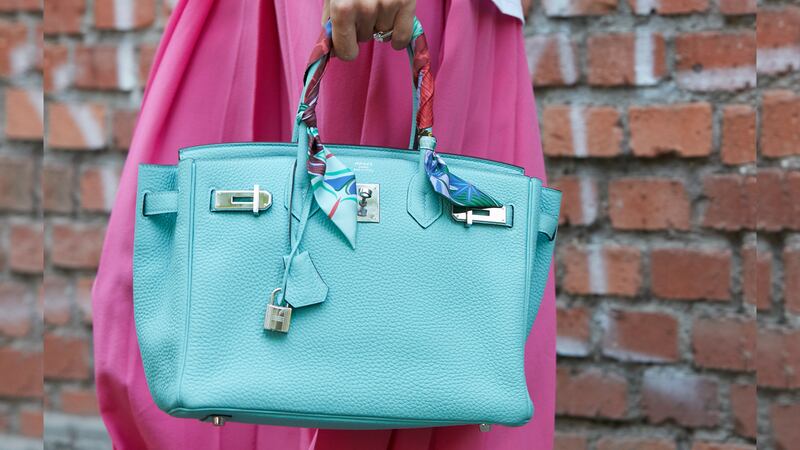
Hermès Continues China Expansion with New Nanjing Store
French luxury brand Hermès inaugurated a new, two-storey boutique in Nanjing’s Deji Plaza, offering a wide selection of clothing, leather goods, home decor and jewellery. The luxury house, which first opened a store in the city in 2010 and counts 27 stores in mainland China, has been expanding its retail footprint during the pandemic period, opening a larger store in Wuhan and its first boutique in Zhengzhou last year. The new openings are a sign of confidence in the Chinese luxury market, which is expected to become the sector’s largest market by 2025, despite Covid-19 disruptions. Shares in global luxury goods groups such as LVMH and Richemont rose in December, after the Chinese government relaxed its zero-Covid policy. (BoF)
Zara and Calvin Luo Launch Collaboration
Fast-fashion giant Zara chose Calvin Luo for its second collaboration with a Chinese designer, unveiling a collection of stylish separates in muted colours for men and women, including leather jackets, cargo trousers and knitwear. The capsule, which is Luo’s first collaboration with an international brand, will be available in mainland China, Hong Kong, Taiwan and Zara’s e-commerce channels from Jan. 18. The collaboration will give Luo an opportunity to expand his retail presence, while allowing Zara to attract young Gen-Z shoppers and tap into the popularity of domestic brands. The Inditex-owned brand inaugurated this strategy last year, collaborating with emerging designer Susan Fang for its first partnership with a Chinese designer. (Yahoo Finance)
Huda Beauty Closes Tmall Store as China’s Beauty Market Evolves
Cosmetic brand Huda Beauty has reportedly closed its flagship store on Tmall and will stop direct sales operations in China. The brand, which launched on the Chinese e-commerce platform in 2020, is the latest in a series of international beauty labels to struggle to adapt to the growing yet challenging Chinese beauty market. On top of issues caused by the country’s Covid-19 restrictions, which have impacted logistics and retail sales, many brands have not been able to keep up with local competitors such as Florasis and Perfect Diary and the demands of increasingly savvy local beauty consumers. Last year, Estée Lauder’s Too Faced and Glamglow closed their Tmall stores, while L’Oréal-owned Maybelline and LVMH’s luxury skin care brand Cha Ling closed all their offline stores in the market. (Inside Retail Asia)
Chinese Menswear Brand Huashengji Closes After 14 Years
Chinese menswear brand Huashengji, worn by high-profile figures such as Alibaba’s founder Jack Ma and Chinese actor Wang Yibo, announced it is ending operations after 14 years. The brand, known for its modern take on traditional Chinese fashion, was particularly popular between 2008 and 2018, tapping into the nation’s ‘guochao’ trend which saw made in China brand grow in popularity amid rising patriotism. Pandemic woes, as well as increasingly stiff local competition and a failed attempt to reposition itself at a higher price point brought its success to a halt, leading the brand to cease the release of new designs in May 2020. China’s troubled retail segment, which in November reported a 5.9 percent decrease in sales compared to a year earlier, has pushed many local and international brands to refine or rethink their place in the market. (South China Morning Post)
消费与零售
CONSUMER & RETAIL
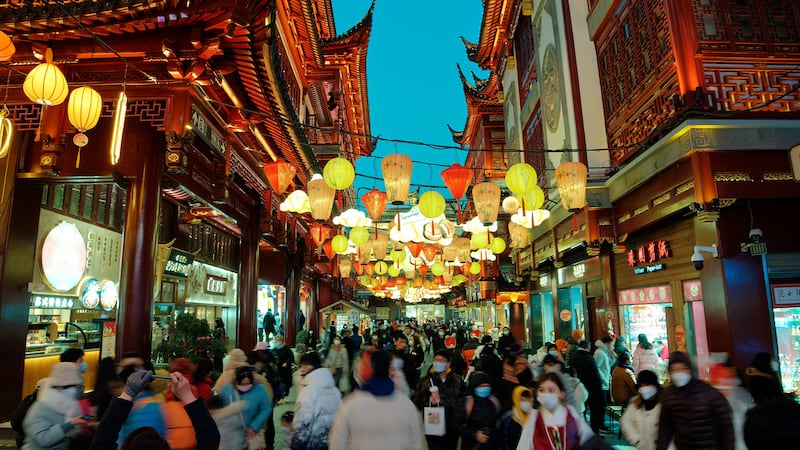
Chinese New Year Travel Kicks Off, International Trips Resume
Chinese citizens made a combined 70.1 million trips within the country on the first weekend of the 40-day Chunyun travel period around the Lunar New Year, which this year is expected to see up to 2.1 billion trips, about twice the amount taken last year. The numbers are encouraging indicators for the country’s economy and domestic travel industry, which are likely to receive a boost from the holiday. However, despite the lack of domestic travel restrictions for the first time since 2020, the total number of trips is expected to remain around 70 per cent lower than pre-pandemic levels as recovery is tainted by spreading Covid-19 infections. On Jan. 8 travel outside the mainland also resumed after China lifted most of its restrictions for international arrivals and travellers from Hong Kong, meaning that destinations such as Europe could finally see a return of Chinese luxury spenders after three years of near absence. The China Outbound Tourism Research Institute estimates 58 million Chinese tourists will travel internationally this year, a little more than a third of those who travelled in 2019. (Bloomberg; Financial Times)
Alibaba’s Jack Ma Loses Control of Ant Group
On Jan. 7, fintech company Ant Group announced a change in its ownership structure that will make sure that no shareholder, alone or with other parties, will have control over the group. After the adjustment, founder Jack Ma will effectively lose control of the group, holding just 6.2 percent of the voting rights. The Chinese billionaire, who owns e-commerce giant Alibaba and founded Ant Group in 2014, previously indirectly controlled 53.46 percent of the company’s shares. Long celebrated in the country as the embodiment of Chinese success, Ma fell from grace in 2020, after criticising China’s financial regulatory system. He has retreated from public life since then, while both Alibaba and Ant Group have been targeted by the Chinese government’s crackdown on big tech. (The Guardian)
More Chinese Consumers Interested in a ‘Minimalist Lifestyle’
According to data gathered by social commerce major Xiaohongshu and the Chinese Academy of Social Sciences’ Institute of Sociology across the platform’s 158 million monthly active users, in 2023 Chinese consumers will value a “simpler” lifestyle, focusing on self-care and connecting with nature. Last year’s lockdowns and the current economic slowdown have impacted Chinese consumer habits, bringing many shoppers to rationalise their purchases more and step away from hype and impulse spending. On Xiaohongshu, posts related to “a minimalist lifestyle” increased by 242 percent in 2022. Others have developed a new appreciation for nature, the outdoors and wellness, with activities such as hiking, camping and cycling expected to remain popular. Finally, consumers are also rediscovering local flavours and traditions, with Gen-Z showing affinity for traditional Chinese culture. (Jing Daily)
Return of Mainland Consumers to Boost Hong Kong Economy
In November, Hong Kong reported a 4.2 percent year-on-year decrease in retail sales to HK$29.5 billion ($3.77 billion), but the recent reopening of its border with mainland China is expected to bring a long-awaited helping hand to the city’s economy in the new year, including a 7.6 percent increase in GDP, according to Goldman Sachs. Recovery, however, will be gradual. The city, which has a quota of 60,000 mainland visitors per day, welcomed only under 21,600 arrivals from that category in its first four days of reopening, between Jan. 8 and Jan. 11. (CNN, BoF)
科技与供应链
TECH & SUPPLY CHAIN
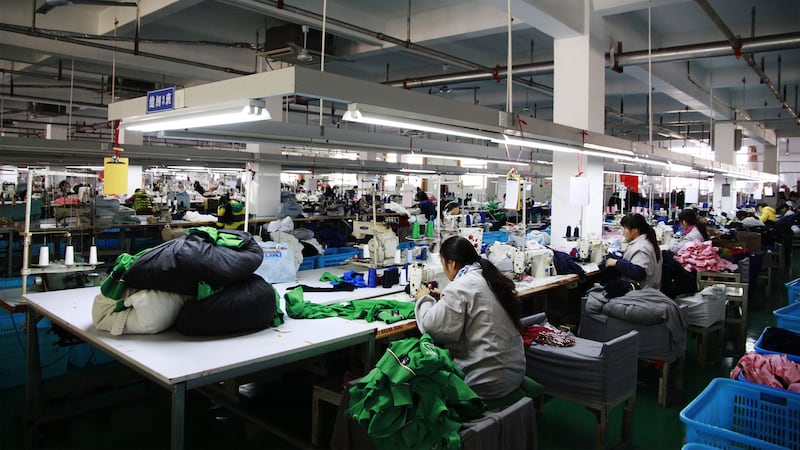
China’s Manufacturing PMI and Exports Fall in December
According to Caixin China, Covid-19 restrictions continued to affect the country’s manufacturing sector in December, with China’s manufacturing purchasing managers’ index (PMI) falling to 49, down from 49.4 in November, and deteriorating for the fifth consecutive month. Total new orders and purchasing activity also fell, while companies continued to reduce their headcounts. In the same month, China’s exports and imports fell 9.9 and 7.5 per cent year-on-year respectively. (Fibre2Fashion, CNBC)
Views and Livestreaming E-Commerce Surge on WeChat Channels
According to parent-company Tencent, WeChat’s total number of views on its short-video feed Channels increased 200 percent year-on-year, while gross merchandise value on Channels’ live streaming e-commerce jumped more than 800 percent in 2022. Advertising revenue generated by the short-video feature is expected to surpass 1 billion yuan ($150 million) in the fourth quarter, Tencent executives said. Channels is a bright spot for Tencent, which has seen its gaming and livestreaming operations struggle in the past year, but faces competition from the likes of Douyin which, according to The Information, attracted consumer spending of 1.41 trillion yuan ($208 billion) in 2022, an increase of 76 percent. (BoF, The Information)
China Launches Five-Year Logistic Plan
China’s General Office of the State Council has unveiled its first 5-year plan to modernise the country’s 12 trillion yuan ($1.74 trillion) logistic sector. Key elements of the strategy include the development of cold chain logistics, improving digitalisation and reducing energy use and emissions, as well as working towards closing the infrastructure and service gap between eastern and western regions and urban and rural areas. Over 50 million people are employed in logistics-related industries in China and the plan is expected to support new business models and encourage job creation. (Fibre2Fashion)
US Highlights Challenges in Uighur Forced Labor Prevention Act
The US Customs and Border Protection Agency is facing increasing difficulties in implementing the country’s Uighur Forced Labor Prevention Act, which went into effect in June and requires companies to prove that goods imported from Xinjiang are not made with forced labour. One of the main challenges is being able to track all the different steps taken by goods within the global supply chain. According to officials, the job has been made harder by some Chinese firms, which are actively obscuring the origins of their products. In November, Xinjiang exports to the US dropped to their lowest levels since 2017. (South China Morning Post)
政治,经济与社会
POLITICS, ECONOMY, SOCIETY
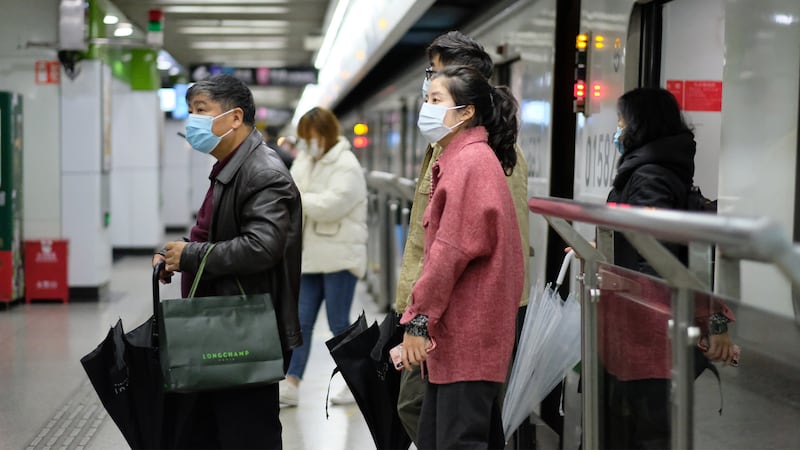
China’s 2022 GDP Growth Declines Sharply, World Bank Lowers 2023 Forecast
China’s gross domestic product (GDP) grew 2.9 percent in the fourth quarter (October-December period) from a year earlier, slower than the third-quarter’s 3.9 percent pace, according to data released this week from the National Bureau of Statistics. For the full year 2022, GDP expanded 3.0 percent, missing the official target of around 5.5 percent and falling sharply from 8.4 percent growth in 2021. Apart from the 2.2 percent rate in 2020, reflecting the initial impact of Covid-19, last year’s figure – which captures the impact of the government’s zero-Covid policy – is the lowest since 1976, the last year of the tumultuous Cultural Revolution. In its latest Global Economics Prospect report published prior to the release of the latest GDP figures by the Chinese government, the World Bank noted that it expects China’s 2023 GDP to expand 4.3 per cent, 0.9 percentage point below its June forecasts. According to the financial institution, the country’s growth will continue to be impacted by pandemic-related disruptions, challenges in the real estate sector, trade fragmentation and rising geopolitical tensions. (Reuters, World Bank, Bloomberg)
China Lifts Covid-19 Outbreak Death Toll to Nearly 60,000
Following criticism from citizens and international bodies such as the World Health Organization, on Jan. 14 China’s National Health Commission updated its Covid-19 death toll, reporting that 59,938 people died of infections related to Covid-19 between Dec. 8 and Jan. 12. The number is a dramatic revision of the 37 deaths reported by the Chinese Center for Disease Control and Prevention between Dec. 7 and Jan. 8. Since China abandoned its zero-Covid policy in December, infections have spiked in the country, with an estimated 250 million people catching the virus in the first 20 days. According to officials, some of the most populous regions including Henan, Guangdong and Jiangsu passed the peak of infections from the current wave in early January, but Zeng Guang, former chief epidemiologist at the Chinese Center for Disease Control and Prevention, expects the peak to last up to three months, with severe consequences for rural areas. (Washington Post, Wall Street Journal, Reuters)
China May Take a Less Antagonistic Stance Toward the West
After exiting its long-standing zero-Covid policy in December, China is now setting in place policies to boost economic growth, an ambition which entails improving its diplomatic position with key countries after years of growing isolation. Priorities include stabilising the property market, improving local government’s finances and boosting consumer spending. Behind closed doors, China is believed to be re-evaluating its close ties with Moscow in light of the ongoing war in Ukraine and showing signs that it wishes to improve relations with the European Union and states such as Germany, France, Italy and Spain, moving away from the antagonistic approach that has characterised its relationship with the West in recent years under the country’s ‘wolf warrior’ diplomats. One of the most famous among them, foreign ministry spokesperson Zhao Lijian, was recently moved by President Xi to an obscure post in a less prominent government department. However, some China observers suggest that any rapprochement could be short-lived. (Financial Times, NPR)
Government Clampdown on Tech Is Over but Grip Remains Tight
According to Guo Shuqing, the Chinese Communist Party secretary of the People’s Bank of China, China’s crackdown on the tech industry has reached its conclusion after two years. The government started to take decisive steps to rein in the power of the country’s largest tech companies at the end of 2020, targeting 14 giants including Alibaba, Tencent, Baidu, JD.com, Bytedance, Meituan and Didi. The crackdown included record fines and stringent regulations that have in some cases led to delistings and the suspension of IPOs. The government, however, is increasing its control over several tech giants with the purchase of “golden shares”, which can grant the rights to nominate directors and influence company decisions. Beijing has already taken a golden share in Bytedance and Kuaishou and is expected to move onto units of Alibaba and Tencent. (Caixin Global, BoF)
China Decoded wants to hear from you. Send tips, suggestions, complaints and compliments to robb.young@businessoffashion.com.
With consumers tightening their belts in China, the battle between global fast fashion brands and local high street giants has intensified.
Investors are bracing for a steep slowdown in luxury sales when luxury companies report their first quarter results, reflecting lacklustre Chinese demand.
The French beauty giant’s two latest deals are part of a wider M&A push by global players to capture a larger slice of the China market, targeting buzzy high-end brands that offer products with distinctive Chinese elements.
Post-Covid spend by US tourists in Europe has surged past 2019 levels. Chinese travellers, by contrast, have largely favoured domestic and regional destinations like Hong Kong, Singapore and Japan.